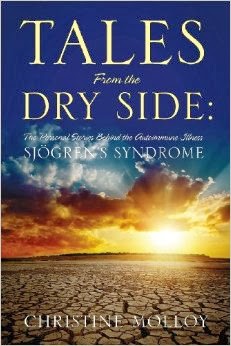I wasn’t planning on doing any writing today but to be honest, I need to write. Actually, there are many times that I need to write. I cannot even tell you how many times I come to this blog to write about how I am feeling regarding living with this illness and instead of blogging, I close down my computer and walk away.
Why?
Because I feel like I don’t have anything positive to say.
And it has come to my attention lately that this is probably not the healthiest way to deal with the psychological impact of having a chronic illness. Of course, I already knew that fact, but I never seemed to think that it applied to me. I thought that the best way for me to get through day after day with this heavy burden that is called Sjögren’s syndrome, was to stay upbeat and positive.
Put on a smile.
Be grateful for what you have.
Make the best out of a lousy situation.
Hell, write a book about it even!
And you know what? I DO believe that keeping a positive attitude is a key element to living well with chronic illness, no doubt about that. However, I now realize that in my efforts to keep myself from getting down and out, I have placed this unrealistic expectation on myself that I need to be upbeat and positive all the time when dealing with others, especially in my writing. I try very hard not to complain whether it is online on social media, or with my friends and family. And I think that is a disservice to us all.
The exceptions to this are my husband, my parents, and my brother. They get the real deal, 24/7. Why? Because they are “safe”. I don’t worry that they will judge me, end a friendship with me, or realize that being in a friendship/relationship with someone like me can be really hard at times. It is not for the weak or for those who cannot handle the unpredictability of what this illness brings. They see me at my worst and love me anyways.
But, living like that is exhausting.
And I cannot keep it up.
I am here to tell you that Sjögren’s syndrome sucks. It is this pervasive and debilitating illness that NEVER gives you a day off. Every single morning I wake up knowing that at the age of 43, I am never going to have a day again where I am completely healthy. It will never go away. It will follow me every single moment of every single day until the day I die. And hopefully, that will be because of old age, and not because of Sjögren’s complications.
That is not a negative attitude.
That is called acceptance.
Acceptance is what frees you. It is acknowledging the reality of the situation while at the same time, making a plan to live as wholly and completely as you can, despite it all. It is knowing that you can do anything you set your mind to while at the same time knowing that doing some things are not worth the price you will pay in the end.
Acceptance is being your genuine self. Not pretending to be fine when you are not. Knowing the value of letting people see how things really are. How exhausted you are or how much pain you are in. How discouraged you are when you spend half of your work week in doctor’s appointments.
Acceptance is having and using the ability to say “no” to people and requests, especially the ones that come from people who don’t try to understand, or maybe don’t even care about, your limitations or restrictions. Maybe its saying no to a trip that you know will be difficult or a stressful situation that may exacerbate your symptoms.
So I am going to work on acceptance and I will forewarn you, it probably will not be pretty at times. It will involve being more honest and I’m sure, using more swear words because that is just what I do. I am aiming for progress, and not perfection. Maybe you can too…

